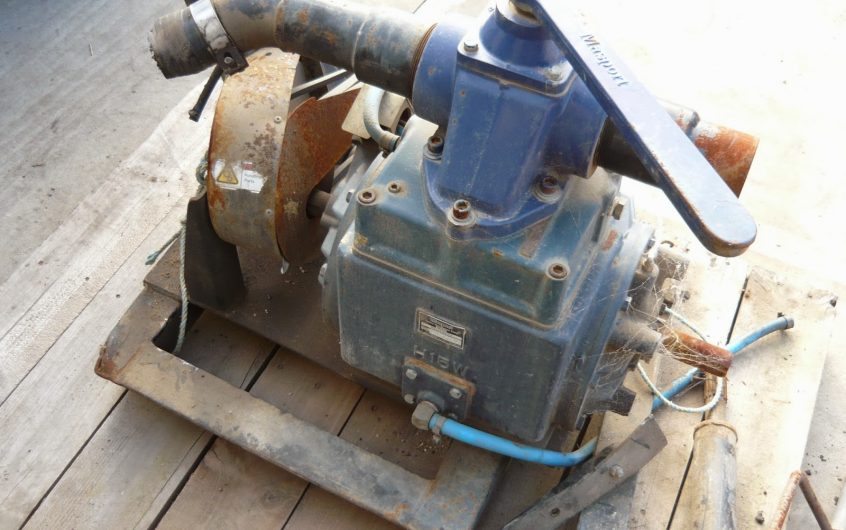Liquid ring vacuum pumps or LRVPs are getting popular today among the industrial field of services because this mechanism has the capability to utilize liquid, especially water in various environments or applications. The condition may be harsh at times, but the machine will still be able to perform or function at its best, and maintain its productivity. I guess, a lot of engineers, and other specialists or professionals have taken this consideration that’s why the demand in industrial firms has greatly increased.
This mechanism can be used in different industrial as well as mechanical and scientific applications. For example, the liquid ring vacuum pumps by Vooner can be used in pharmaceutical, health sectors, petrochemical, power plant, and food manufacturing applications to name a few. Some processes used this in distillation columns, chemical reactors, steam condensers, laboratory analysis, and evaporative coolers. This only shows that it is an essential device since it is widely used in different settings and situations.
The LRVP is not just a mechanism for simple tasks because it is designed to help in the optimum performance of various manufacturing companies, especially when it comes to their service operations. With such aid, every task performed will be made faster and that would be a great advantage because more services can be rendered by engineering teams. There are also other pumping systems available, but this is preferred for some reasons.
Why LRVP?
When it comes to the working principle, it follows the positive displacement mechanism. So it is just like the rotary vane, though it differs in terms of the pumping and rotating. However, this is not the only basis why it came to be known in the industry.
You should know that a liquid ring vacuum pump is commonly used in most industrial services for different reasons. Generally, this mechanism is popular because of its versatility, which is why when you visit factories that produce pharmaceuticals, processed foods, auto assemblies, and agricultural settings, this mechanism is present. But what you should be using will still depend on the evaluation of particular applications that you are currently working on.
Understanding LRVP
In the cylindrical casing of the vacuum pump, you will find 2 port plates and the impeller is between this. The plates have holes for suction and discharge purposes. It is in the pump where the liquid is used to form a vacuum and the volume should just be a quarter of the container.
Now, the water or oil will be discharged as the impeller starts rotating and void space will be created. This water or oil will be in motion due to the centrifugal force and that is why a ring is formed. The ring is concentric to the casing, while it is eccentric when it comes to the impeller.
By the way, when the impeller is still rotating, the inlet port or suction will suck gas. This will be compressed, and then, it will lead to the port to be discharged. Visit https://www.quora.com/How-does-a-liquid-ring-vacuum-pump-work to continue reading on LRVP operation.
The Functions
The first function is the intake. This is where the gas or air will be sucked. The machine is designed with an opening, where the rotor pulls the gas or air for compression.
For the second function, which is compression, the pressure is required. When the rotor is already filled with water formed as a ring, pressure comes in. This air will now pass through the intake and will be trapped.
Discharge is the last function. It is when the rotors receive the trapped air with pressure as it goes to the exit port. The gas or air will be released from this port.
Improving the LRVP System Performance
The performance of the LRVP can still be improved by installing solenoid valves, where you have to interlock the supply of cooling water and the seal with the motor of your pump. This will help in preventing wastage when the machine is at standby mode. To eliminate the production of waste, you may also use an alternative seal.
You should also install a heat exchanger for the sealing liquid, especially when it is used under high temperature. This may be costly but it is for more efficient performance. And then, to reduce the cost of electricity, you may install a VSD or Variable Speed Drive, which also helps in minimizing wear and tear.
Advantages
Generally, the LRVP became immensely popular because it does not require lubrication since it is designed without any contact or touch with other metals attached in the unit, while other pumping systems need or require lubricants. That is the main reason why this mechanism suits different types of gases and fluids. It can withstand explosive and combustible gases or vapors because the materials used are durable, so the performance won’t be affected and even the temperature of the compressed gases that you can find in the pump’s cavity will stay at the same level.
Actually, it is an ideal type of pumping system for various applications because it is capable of employing vacuum and compression that most industries are demanding. Remember that its impeller compresses the gas and this mechanism can be applied in the extraction of moisture, distillation, or condensation of vacuum, vaporization, beneficiation of mineral, ash or air handling, and separation of water from the paper pulp to name a few applications. It can handle such tasks continuously, yet its maintenance cost is low and that is due to the technology like the liquid ring and presence of impeller, where both contribute to the reduction of regular expenses for the maintenance – look at this to learn more.
It also comes with a compact design so space constraints issues are eliminated, and durable construction using materials like cast iron. The functions are quite simple and easier to understand, so the operation won’t be a big problem for the workers, especially now that the machine is stable and consistent when it comes to producing results. You just need to make sure that the machine will be handled properly so that you can prevent failures or problems that may affect the performance of the system and the unit itself.




